Apples + More
We are all about apples at Kercher’s. 20 of our 300 acres are dedicated to growing 19 different varieties of apples.
Apples + More
We are all about apples at Kercher’s. 20 of our 300 acres are dedicated to growing 19 different varieties of apples.
U-PICK VARIETIES
Also available in our Market
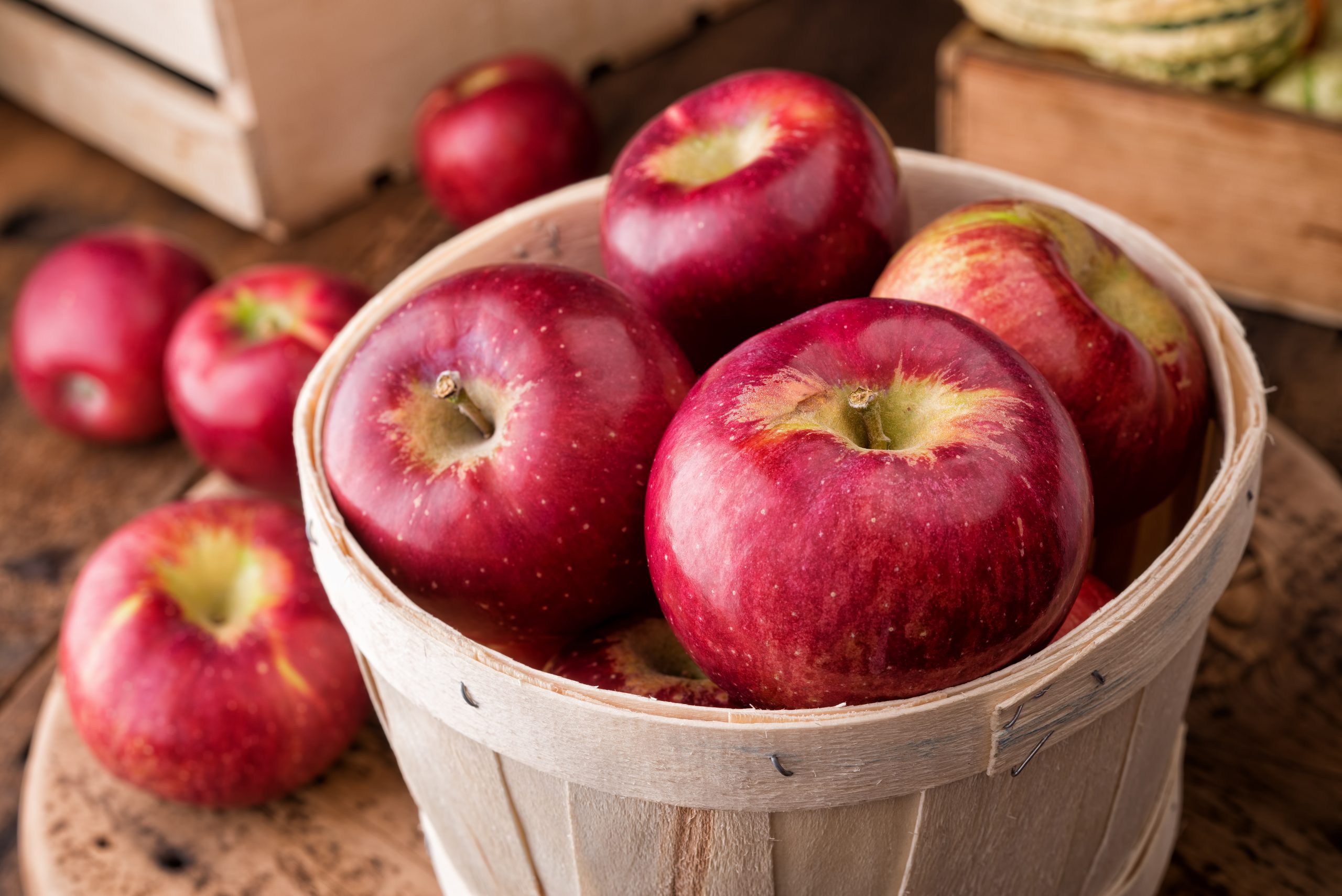
Cortland
The Cortland apple is an older American variety of Malus domestica, one of the many offspring of McIntosh apples. It combines the sweet flavor of the McIntosh with the cold hardiness of its other parent, Ben Davis. Cortlands have long been one of the most commonly produced apples in New York, consistently ranking in the top ten in the state. Cortland apples are medium to large in size, and often rather flat in shape. They are bright red and covered with dark red streaks; often they are capped with a green blush. Their crisp, finely-grained white flesh is exceptionally juicy with a sharp, sweet-tart, vinous flavor.
SEASON: mid to late September
USES: snacking, baking, cooking
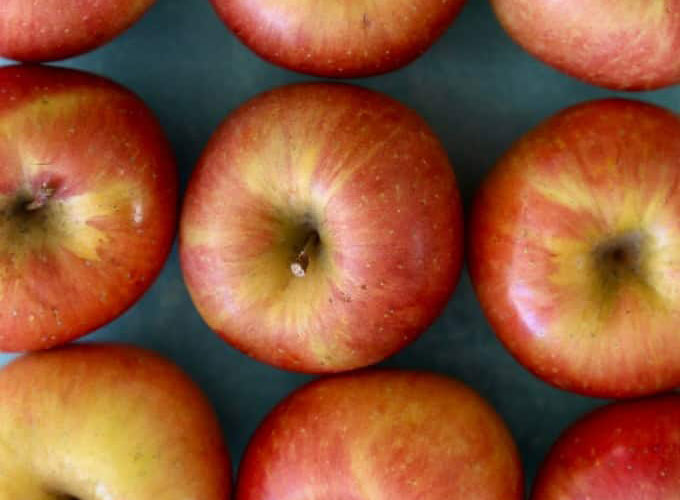
Evercrisp
EverCrisp® is sweet and juicy – a yummy apple that holds a powerful crunch – combining the best features of MAIA-1’s parent varieties, Honeycrisp and Fuji. The EverCrisp® name says it all. The durable apple arrives late in the season and stores strongly – it maintains sweetness and firmness like no other. That makes EverCrisp® the perfect treat for a holiday celebration and the ideal snack for a healthy New Year.
SEASON: October—November
USES: snacking
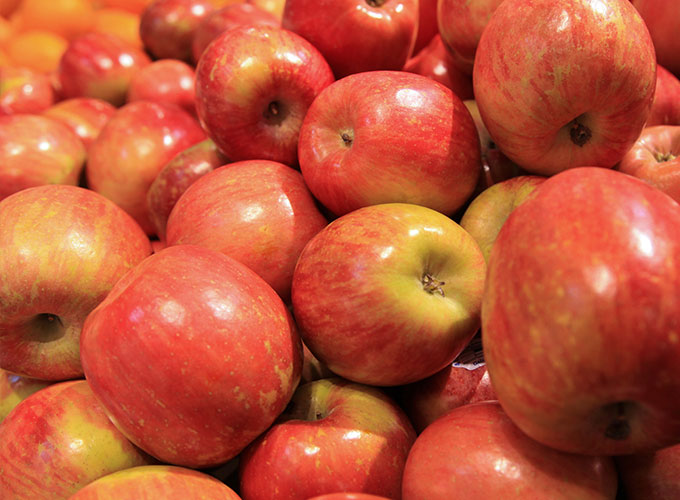
Fuji
Originally developed in Japan in the late 1930s and named after the famous Mt. Fuji, U.S.-grown Fujis began appearing in markets in the 1980s. Fuji is a cross between Ralls Janet and Red Delicious. This variety´s popularity is skyrocketing, thanks to its sweet flavor and firmness. Fuji apples are bi-colored, typically striped with yellow and red.
SEASON: mid October
USES: snacking, baking
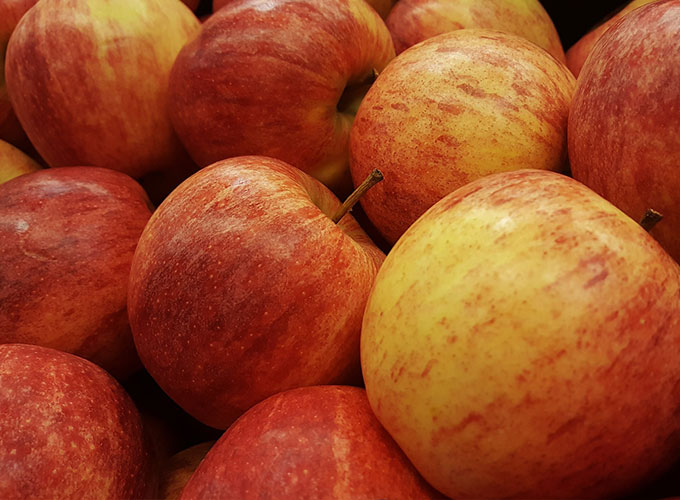
Gala
This variety, a cross between Kidd’s Orange Red and Golden Delicious, originated in New Zealand. The Royal Gala strain was named in honor of Queen Elizabeth II, who deemed it her favorite during a visit to New Zealand. It was brought to the United States in the early 1970s and is now one of the country’s most popular apples. Crisp, juicy, and very sweet, Galas can vary in color, from cream to red and yellow-striped.
SEASON: Early September
USES: snacking, baking, freezing
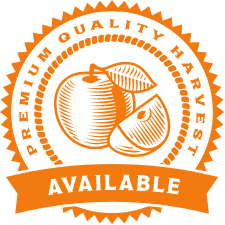
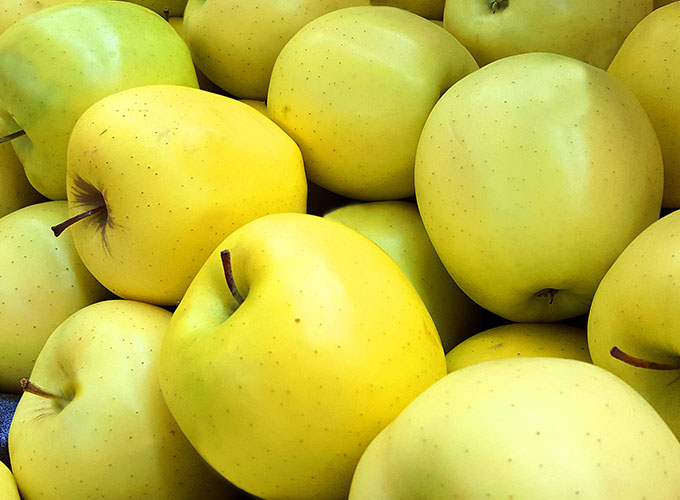
Golden Delicious
Yellow with an occasional pink blush, Golden Delicious is “Apple Lite” – loved by those who prefer a mild, sweet flavor. There’s nothing tart about this apple….just a buttery, honey taste to please. Great for baking into apple pies and crisps mixed with more tart apples like Granny Smiths. It makes for a great flavor combo that tickles all your taste buds, all year round.
SEASON: early October
USES: snacking, salads, sauces, baking, freezing
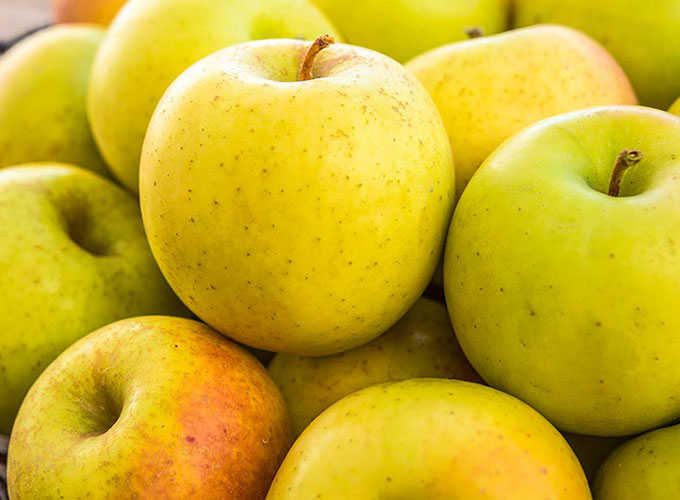
Gold Rush
Gold rush apples are so named for the “rush” of crisp flavor you can expect when biting into the apple. It is sweet like its parent apple, the golden delicious, and some say that the flavor has a bit of spice. It does have a higher degree of acidity than the golden delicious, but it still produces delightful juice, making it a favorite apple for cider makers. The most noteworthy feature of these apples, other than that they are disease resistant, is that they have a very, very long shelf life – up to seven months! Upon picking, they are tart, but after maturing for another 6-8 weeks, they are prime candidates to be dessert apples.
SEASON: mid to late October
USES: snacking, cooking, cider

Granny Smith
This Australian native was discovered in 1868 as a chance seedling by “Granny” Anne Smith of Ryde, New South Wales. One parent might have been a French crabapple. Grannies are known for their distinctive green flesh – which sometimes bears a red blush – and their very tart flavor.
SEASON: mid to late October
USES: “all-purpose”, snacking, baking, sauce
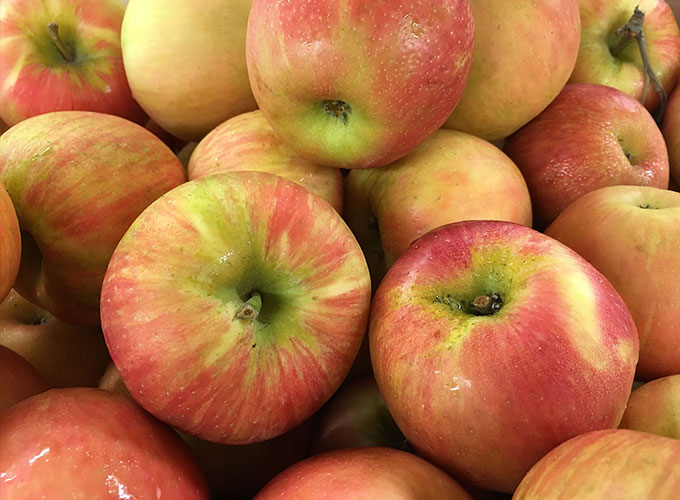
Honeycrisp
This honey of an apple has a honeyed, mild flavor and a crispness deemed explosive. Juicy and sweet, this popular newcomer is a cross between Keepsake and an unreleased Minnesota line known as MN 1627. Honeycrisp’s skin is a distinctive mottled red over a yellow background, with coarse flesh. Honeycrisp is “college educated,” developed by the University of Minnesota.
SEASON: early September
USES: snacking, salads, sauce, stores well

Jonagold
The apple doesn’t fall far from the tree when it comes to Jonagold. The Jonagold apple is a cross between Golden Delicious and the Jonathan. It first appeared in 1953 at the New York State Agricultural Experiment Station in Geneva, New York. This apple tends to be large in size and is tangy sweet with honey-like flavor notes. On the outside, Jonagold is crimson red flushed with yellow-green undertones. The flesh is a creamy pale yellow color. They have a shorter season than many apples, making them a real treat in the fall and winter months.
SEASON: mid to late September
USES: snacking, salads, cider, baking
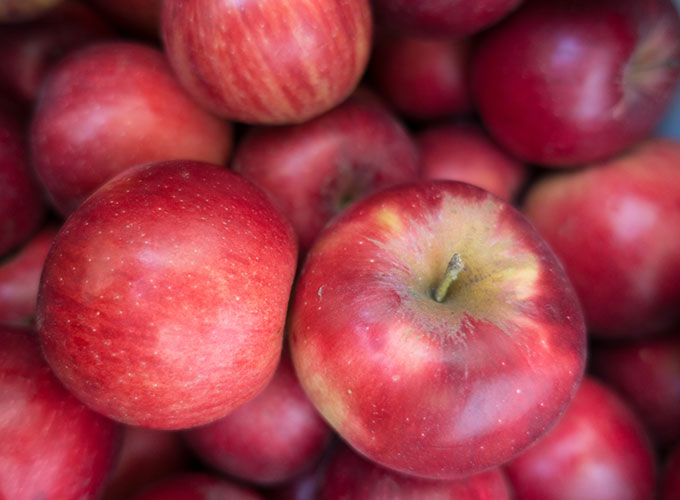
Jonathan
The Jonathan apple is a variety of Malus domestica believed to be a relative of the Esopus Spitzenburg apple. The Jonathan is a classic American heirloom and has been parent to many varieties throughout the years such as Jonamac, Jonafree and Jonagold, as indicated by sharing the first four letters of Jonathan’s name. The Jonathan apple is medium-sized and covered in a thin red skin, blushed with yellow to green undertones. Fruit from trees that have limited sun exposure during the ripening process will often have vertical red striping and subtle lenticels (spots) on the skin. Trees that are exposed to more sun will take on a deeper red to purple hue. The fine-textured flesh of the Jonathon apple is creamy yellow in color with a crisp bite and lots of juice. Its flavor is mildly sweet with a tart tang and subtle hints of spice.
SEASON: mid September to early October
USES: snacking, baking
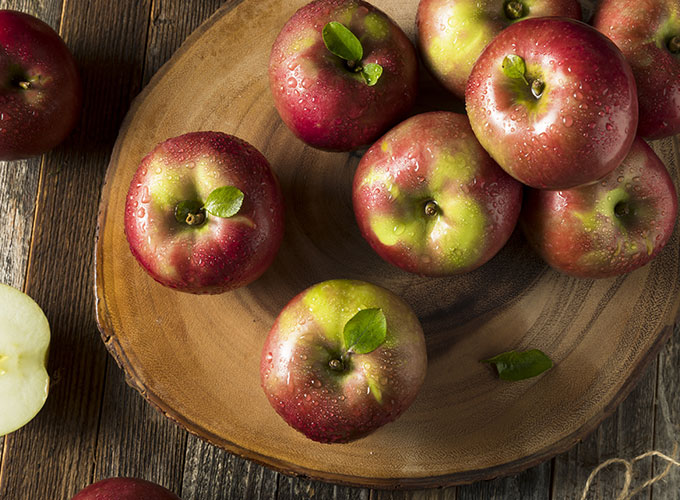
McIntosh
This old, well-known variety was discovered as a chance seedling by John McIntosh in 1811. Its deep-red finish sometimes carries a green blush. Juicy, tangy, tart McIntosh has a tender, white flesh. Cook’s hints: McIntosh cooks down easily; if pie making, cut slices thick or add a thickener.
SEASON: September
USES: snacking, applesauce, baking

MARKET VARIETIES
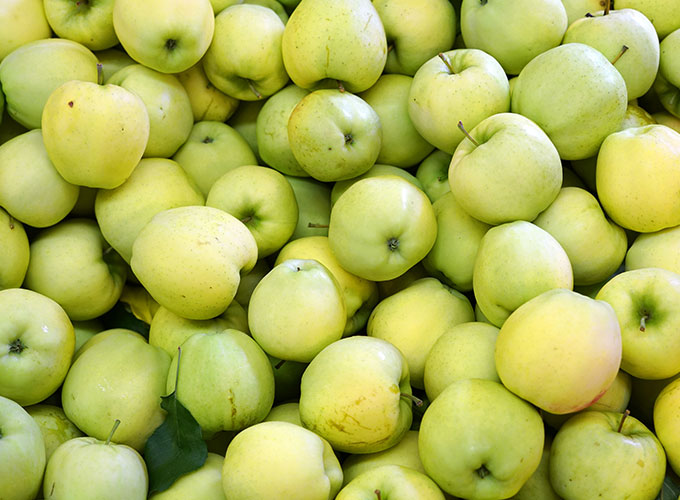
Ginger Gold
Ginger Gold apples are one of the first Malus domestica varieties available in the fall. The Virginia apple is a cross between Golden Delicious and Albemarle Pippin (Newtown Pippin) apples. Ginger Gold has been described as one of the best-tasting early-season apples. Ginger Gold apples have a pale yellow skin with slight russeting on the surface. They are variable in size, but tend toward conical in shape, sometimes with ribs and long stalks. They have a crisp, cream-colored flesh with a sweet, mildly tart taste. The sweet apple also has a sharp flavor that provides a slight spiciness. The flesh has a fine texture and does not brown right away when cut, making for a nicer appearance in fruit salads and as a fresh-cut snack.
SEASON: late summer to late fall
USES: baking, cooking, snacking, drying, salads

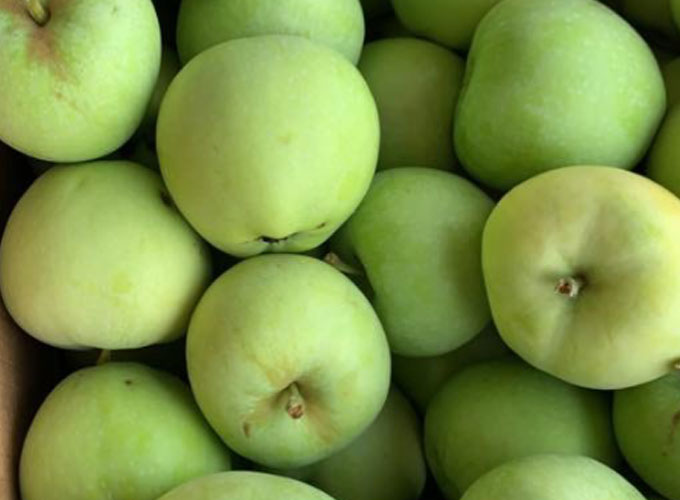
Lodi Transparent
Lodi apples are believed to have been developed from the yellow transparent and Montgomery apple varieties and are one of the earliest cultivars to be found in American markets, often appearing in the summer. Lodi apples are not commercially cultivated due to their short shelf life and the flesh frequently cracking in storage. The apples have become a valued home garden variety in the southern United States and are popularly used in cooked applications, including baked goods and sauces. Lodi apples are moderately-sized fruits with a round, oblate, to conical shape. The skin is semi-thin, smooth, and pale green, covered in tiny pores or lenticels, and has a dimpled, ribbed, and slightly lumpy appearance. Underneath the surface, the flesh is aqueous, ivory to white, soft, and fine-grained, encasing a central core filled with very small, black-brown seeds. Lodi apples are crunchy with an initially tart flavor, followed by a subtly sweet aftertaste.
SEASON: mid-summer through fall
USES: baking, sauce, snacking, cider, drying
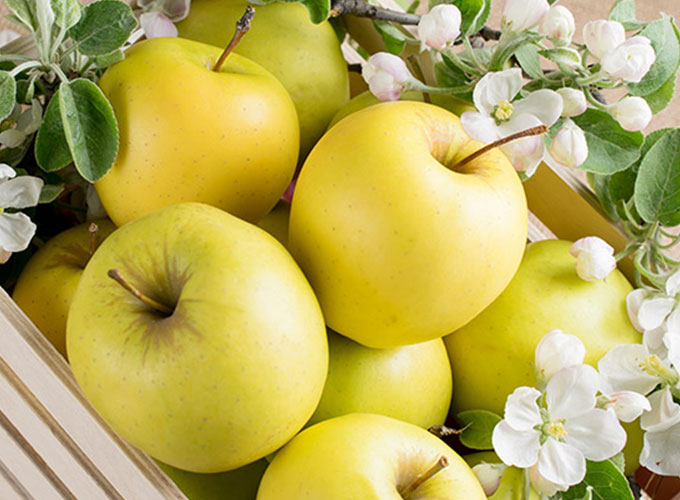
Mutsu
Mutsu apples, botanically classified as Malus domestica, are a mid-season variety that belongs to the Rosaceae family. The cultivar was created in Japan, named after the Mutsu province, and is a cross between a golden delicious and an indo apple. Mutsu apples are a popular dessert variety in Japan and are colloquially known as the “million-dollar apple.” The variety has the unique ability to be cultivated in a number of ways to create different skin colorings, and these color variations allow the apples to be sold for high prices in Japanese markets. Mutsu apples are also known as Crispin apples in the United Kingdom and are favored as a culinary pear for their aromatic, coarse flesh and sweet-tart flavor.
SEASON: fall
USES: baking, snacking, cooking, salads, drying, cider
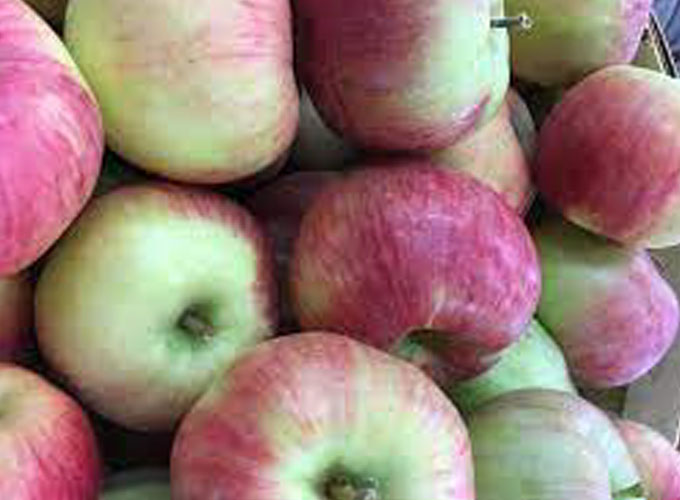
Northern Spy
The Northern Spy is a naturally vigorous variety which will produce a relatively large tree, however while it is a hardy grower, it can take longer than most apple varieties to come into bearing. Known for its winter hardiness, Northern Spy apples can be stored up to three months in a cool dry place lasting well into early spring. Northern Spy apples are a very late season, large and stout apple with carmine red skin married with streaks of yellow and pale green. Its tender-crisp flesh is creamy yellow and juicy. It imparts a bit of a tartness in its bite, but more of a cider-quality flavor with hints of pear and sweetness.
SEASON: fall
USES: snacking, baking, salads, cider
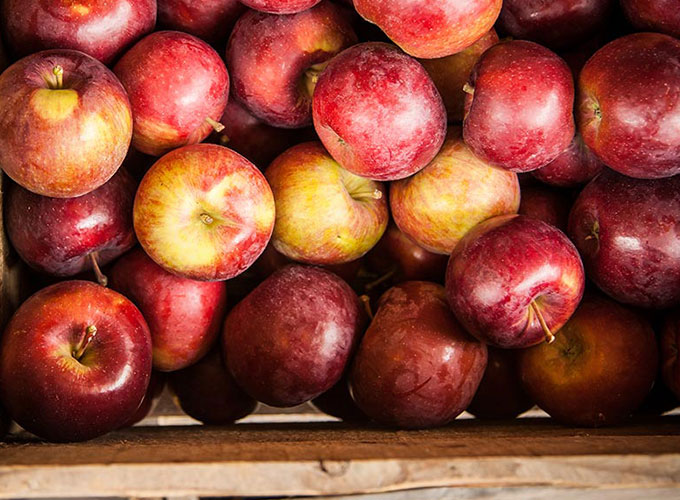
Paula Red
Paula Reds are one of the first apples of the season’s harvest and are a welcome sign of fall for many. This variety of Malus domestica is thought to have originated from McIntosh, but its exact parentage is unknown; the other parent may be the Cortland. Paula Red apples are an attractive fruit with dusty red-colored skin covered in gold spots. Their appearance is reminiscent of the more well-known McIntosh. They have white flesh that is juicy but can become mealy. The flavor is both sweet and tart. Some have claimed to detect the flavor of strawberries as well.
SEASON: late summer through mid-fall
USES: snacking, cooking, sauce
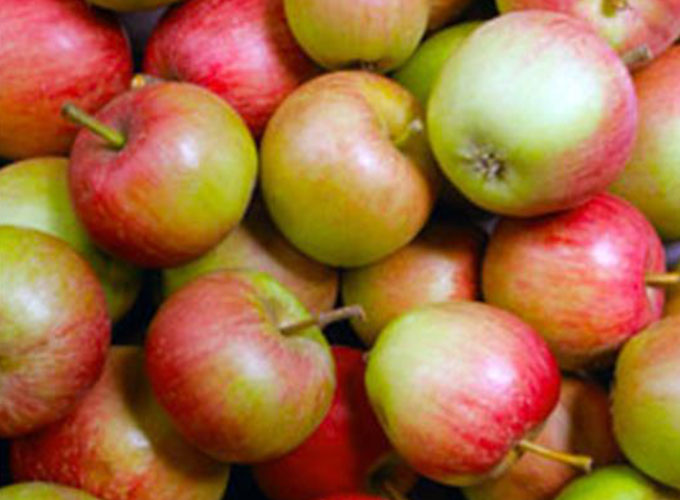
Winesap
A member of the rose family (Rosaceae), the Winesap apple is parent to a variety of different strains including the Arkansas Black and Stayman Winesap. Unlike most apple trees the flower blossoms on the Winesap tree are pink rather than white. Winesap apples are dark red, round, and medium-sized; the skin of this apple is firm, and the flesh is crisp and exceptionally juicy with a creamy yellow hue. Winesap apples are highly aromatic with a balanced sweet-tart taste and get their name due to their distinctive spicy wine-like flavor.
SEASON: mid-fall through early winter
USES: cider, sauces, preserves, baking, cooking
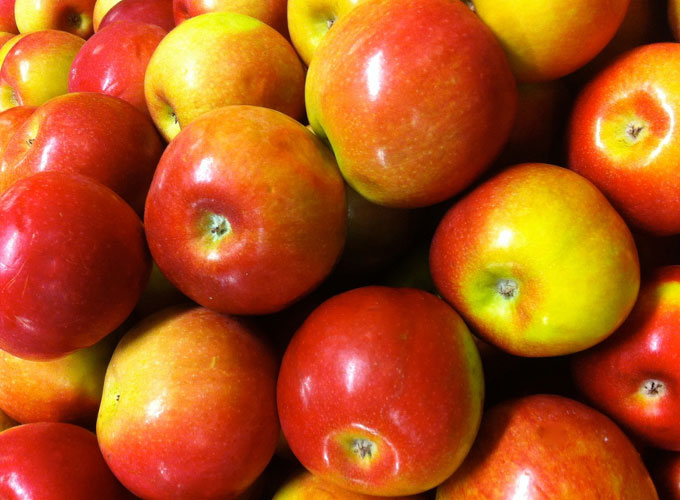
Zestar
Zestar!™ apples, botanically classified as Malus domestica, are an early ripening variety that was developed at the University of Minnesota in 1999. Zestar!™ apples are the result of a cross between a numbered varietal and the state fair apple, and were originally patented under the name “Minnewashta.” The apple’s tangy and sweet flavor earned the fruit its current moniker, and Zestar!™ apples were created to meet the demand for an early-season variety with excellent flavor and shelf life. Zestar!™ apples are an all-purpose apple and are known as one of the parents to the popular sweetango™ variety. Zestar!™ apples are medium to large in size and are round in shape, averaging seven centimeters in diameter. The yellow-green skin is smooth, shiny, and firm with contrasting orange and red striations, giving the fruit a rosy blush over the majority of the skin. There are also many small light tan lenticels or pores covering the surface. The cream-colored to white flesh is juicy and crisp, and there are a few small dark brown seeds encased in the central fibrous core. Zestar!™ apples have a sweet-tart taste with notes of brown sugar.
SEASON: late summer through mid-fall
USES: baking, snacking, salads

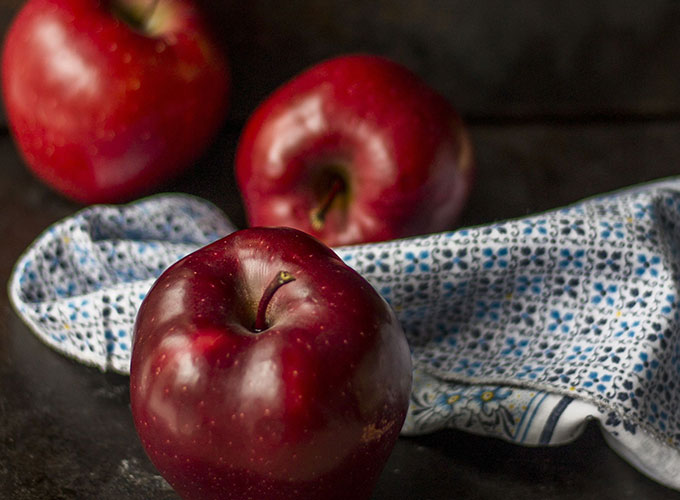
Red Delicious
The most widely recognized of all U.S. apple varieties originated in Iowa in the 1870s. This sweet, crispy, juicy apple varies in color from striped red to solid midnight red. Western Red Delicious are elongated in shape, with pronounced “feet.” Eastern-grown Delicious are more round.
SEASON: late September to early October
USES: snacking, salads
Sources: Apples From NY, Minnetonka Orchards, USA Apple, Specialty Produce, EverCrisp Apple
Super Sweet Corn
Available by the ear or by the truckload! Each ear is hand-selected, with only the best ears making the cut. This pack of corn will remain fresh for 14 days or more when refrigerated and unopened. The sweet, succulent kernels will burst in your mouth with flavor!

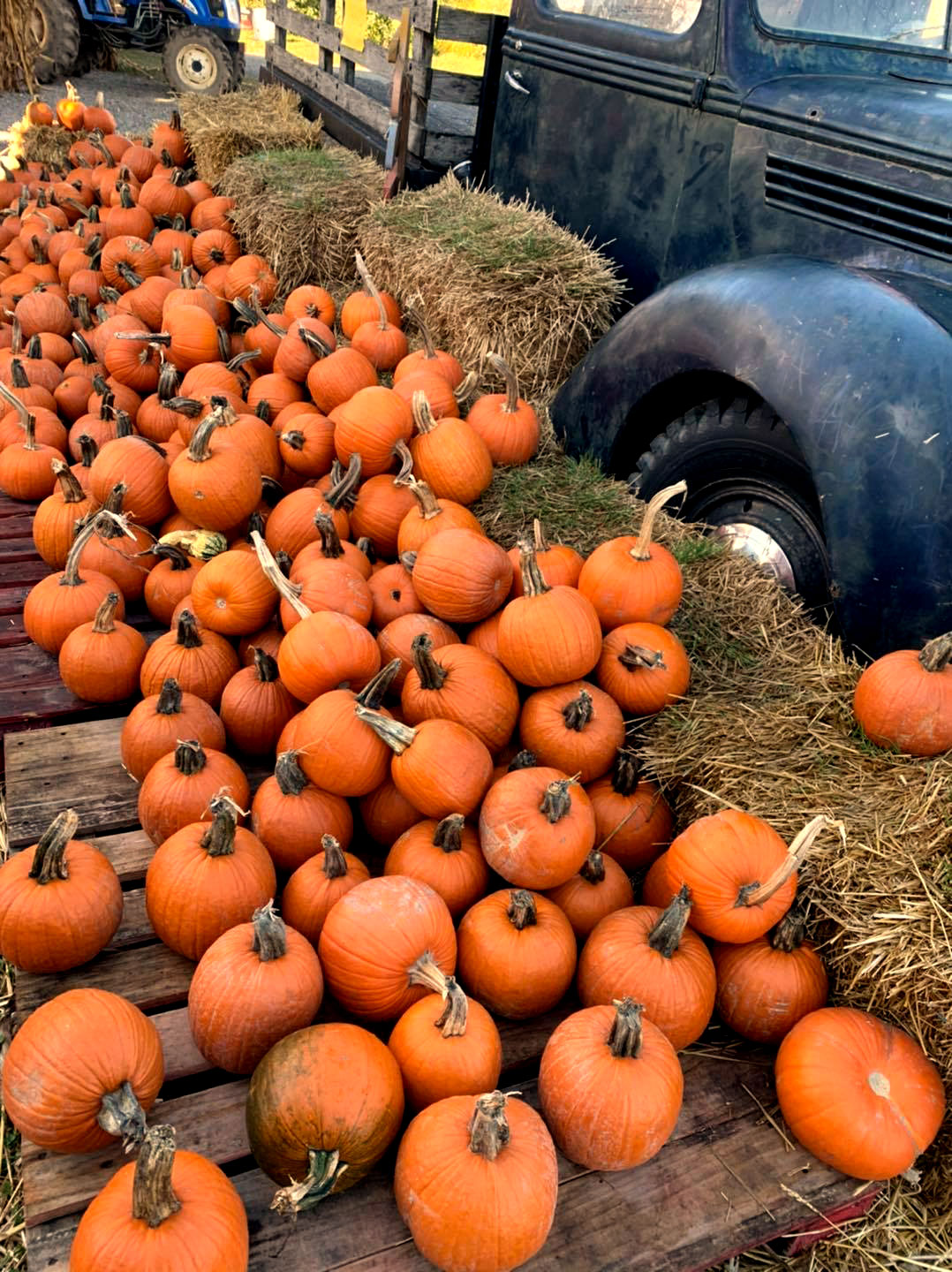
Pumpkins
U-Pick Pumpkins start on the last two weekends in September and continue through every weekend in October. Jump on a fun and relaxing hayride through the orchard to the pumpkin patch. A great family activity, a favorite family memory. We recommend shoes or boots that are field appropriate. You could encounter mud and weeds while picking apples and pumpkins.

Pumpkins
U-Pick Pumpkins start on the last two weekends in September and continue through every weekend in October. Jump on a fun and relaxing hayride through the orchard to the pumpkin patch. A great family activity, a favorite family memory. We recommend shoes or boots that are field appropriate. You could encounter mud and weeds while picking apples and pumpkins.

Super Sweet Corn
Available by the ear or by the truckload! Each ear is hand-selected, with only the best ears making the cut. This pack of corn will remain fresh for 14 days or more when refrigerated and unopened. The sweet, succulent kernels will burst in your mouth with flavor!




